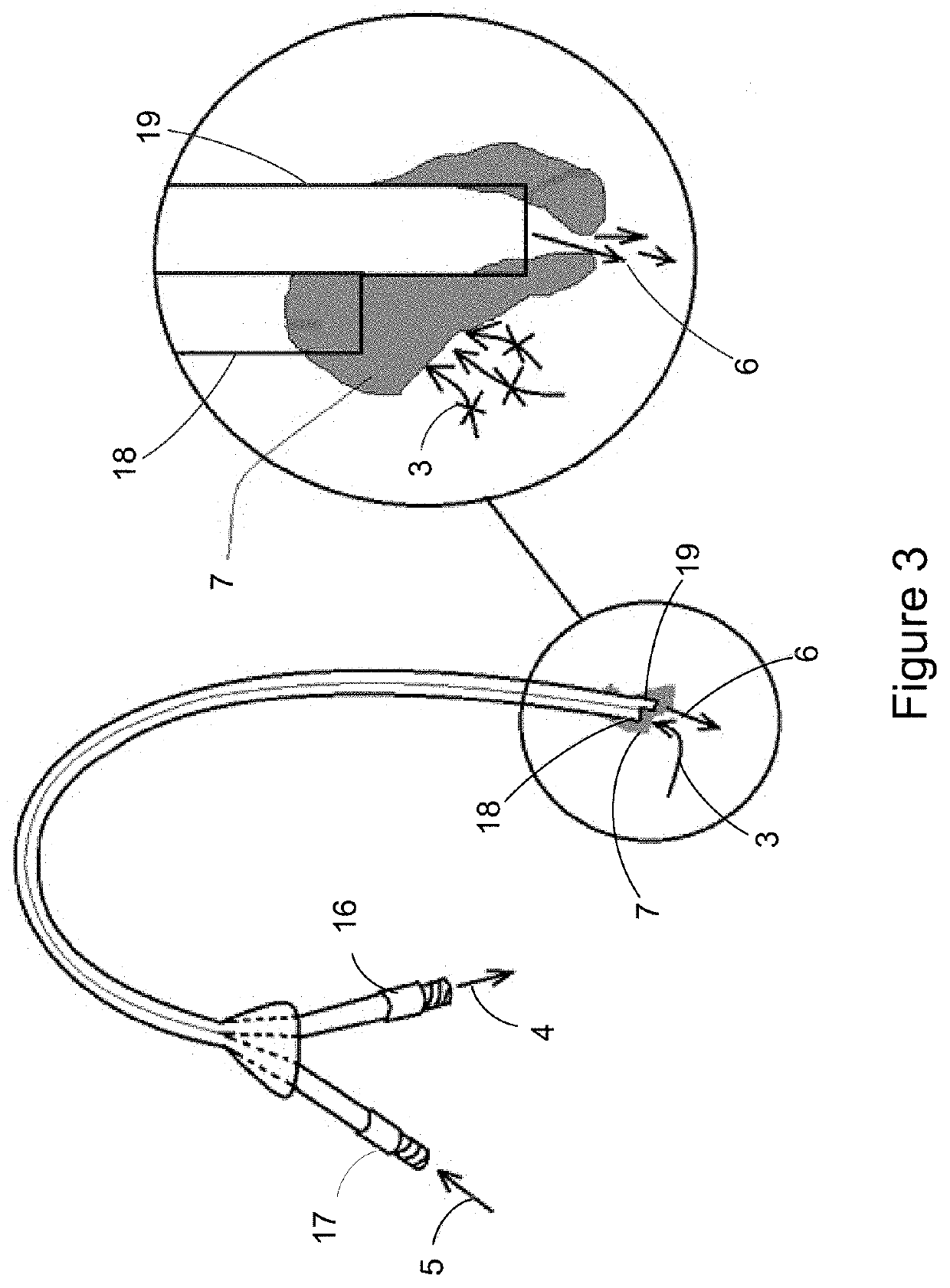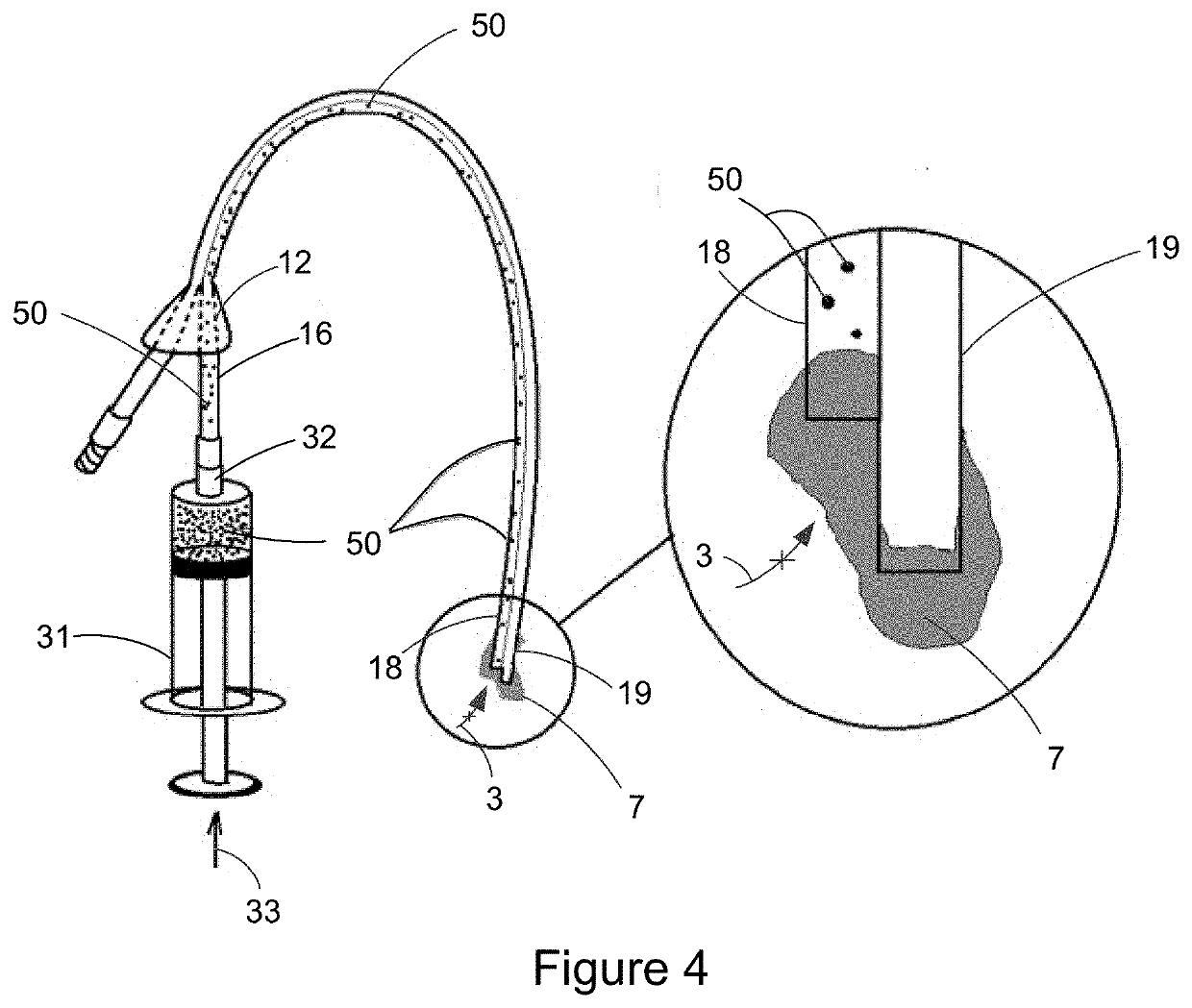Catheter clearance device and method of use
a catheter and catheter technology, applied in the direction of balloon catheters, multi-lumen catheters, tube connectors, etc., can solve the problems of high infection rate, catheters are known not to be efficient long-term dialysis, and very short patency rates
- Summary
- Abstract
- Description
- Claims
- Application Information
AI Technical Summary
Benefits of technology
Problems solved by technology
Method used
Image
Examples
Embodiment Construction
[0043]Hemodialysis patients require routine large volume blood exchange to survive, and our bodies fight off efforts to allow this access. For many dialysis patients a permanent, indwelling catheter is the means of providing such access. Dialysis catheters have advantages over other methods of access however also have a limited time in which they will stay open and function mainly because of fibrin and clot forming on the tip. This invention and the method of use describe a means to direct a drug, a thrombolytic, directly at the point needed for a specific duration for dialysis catheters which are made in specific standard sizes.
[0044]FIG. 1 illustrates a standard dialysis catheter 11 consisting of an aspiration tube 12, an injection tube 13 held together by a cuff 14 and a catheter 15. The aspiration tube 12 is attached to an aspiration port 16 on one end, and a distal tip on the other end 18. The injection tube 13 is attached to an injection port 17 on one end, and a distal tip on...
PUM
 Login to View More
Login to View More Abstract
Description
Claims
Application Information
 Login to View More
Login to View More - R&D
- Intellectual Property
- Life Sciences
- Materials
- Tech Scout
- Unparalleled Data Quality
- Higher Quality Content
- 60% Fewer Hallucinations
Browse by: Latest US Patents, China's latest patents, Technical Efficacy Thesaurus, Application Domain, Technology Topic, Popular Technical Reports.
© 2025 PatSnap. All rights reserved.Legal|Privacy policy|Modern Slavery Act Transparency Statement|Sitemap|About US| Contact US: help@patsnap.com



